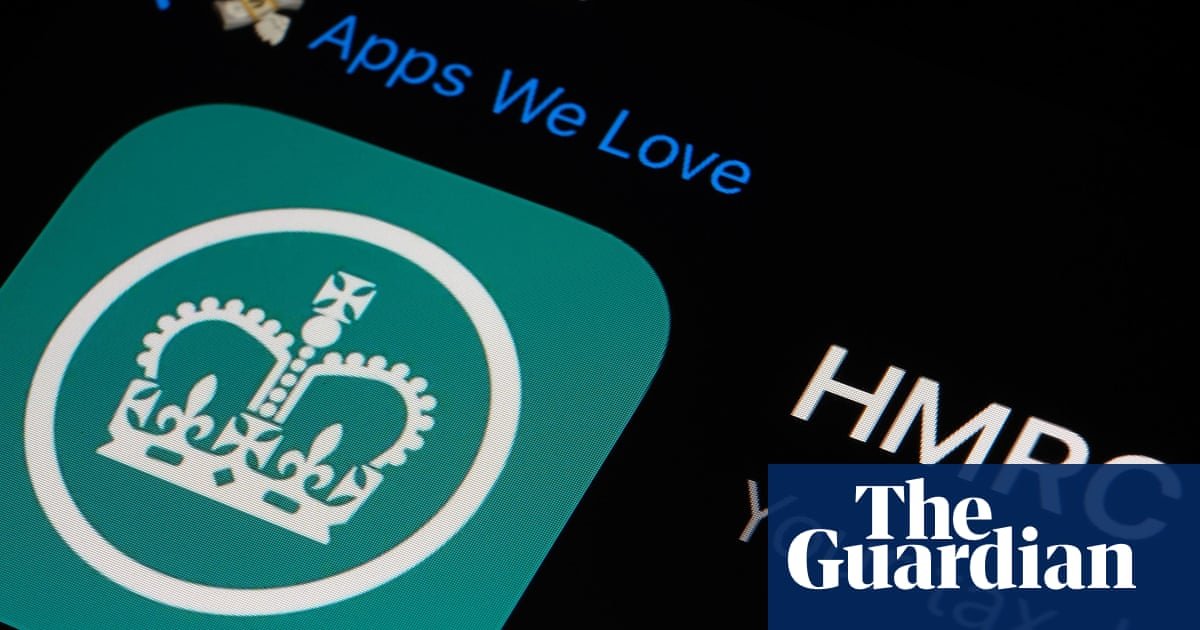Business
Anthropic Settles High-Profile AI Copyright Lawsuit Brought by Book Authors

Anthropic has reached a preliminary settlement in a class action lawsuit brought by a group of prominent authors, marking a major turn in of the most significant ongoing AI copyright lawsuits in history. The move will allow Anthropic to avoid what could have been a financially devastating outcome in court.
The settlement agreement is expected to be finalized on September 3, with more details to follow, according to a legal filing published Tuesday. Anthropic declined to comment. “This historic settlement will benefit all class members. We look forward to announcing details of the settlement in the coming weeks,” Justin Nelson, a lawyer representing the plaintiffs, said in a statement to WIRED.
In 2024, three book writers, Andrea Bartz, Charles Graeber, and Kirk Wallace Johnson, sued Anthropic, alleging that the startup illegally used their work to train its artificial intelligence models. In June, California district court judge William Alsup issued a summary judgment in Bartz v. Anthropic that largely sided with Anthropic, finding that the company’s usage of the books was “fair use” and thus legal.
But the judge ruled that the manner in which Anthropic had acquired some of the works, by downloading them through so-called shadow libraries, including a notorious site called LibGen, constituted piracy. Alsup ruled that the book authors could still take Anthropic to trial in a class action for pirating their works; the legal showdown was slated to begin in December.
Statutory damages for this kind of piracy start at $750 per infringed work, according to US copyright law. Because the library of books amassed by Anthropic was thought to contain approximately 7 million works, the AI company was potentially facing court-imposed penalties amounting to billions, possibly more than $1 trillion dollars.
“It’s a stunning turn of events, given how Anthropic was fighting tooth and nail in two courts in this case. And the company recently hired a new trial team,” says Edward Lee, a law professor at Santa Clara University who closely follows AI copyright litigation. “But they had few defenses at trial, given how Judge Alsup ruled. So Anthropic was starting at the risk of statutory damages in ‘doomsday’ amounts.”
Most authors who may have been part of the class action were just starting to receive notice that they qualified to participate. The Authors Guild, a trade group representing professional writers, sent out a notice alerting authors that they might be eligible earlier this month, and lawyers for the plaintiffs were scheduled to submit a “list of affected works” to the court on September 1. This means that many of these writers were not privy to the negotiations that took place.
“The big question is whether there is a significant revolt from within the author class after the settlement terms are unveiled,” says James Grimmelmann, a professor of digital and internet law at Cornell University. “That will be a very important barometer of where copyright owner sentiment stands.”
Anthropic is still facing a number of other copyright-related legal challenges. One of the most high-profile disputes involves a group of major record labels, including Universal Music Group, which allege that the company illegally trained its AI programs on copyrighted lyrics. The plaintiffs recently filed to amend their case to allege that Anthropic had used the peer-to-peer file sharing service BitTorrent to download songs illegally.
Settlements don’t set legal precedent, but the details of this case will likely be watched closely as dozens of other high-profile AI copyright cases continue to wind through the courts.
Update: 8/26/25, 11:40 pm EST: This story has been updated to include comment from an attorney representing the plaintiffs.
Business
UK chasing £90m in taxes from temp staffing firm rescued from insolvency | HMRC

The UK exchequer is chasing about £90m in unpaid taxes after a temporary staffing business was rescued from insolvency proceedings in an £18m deal that reimbursed private funders in full.
The main assets of Challenge Recruitment Group, which counted Tesco, Sainsbury’s and Co-op among its top customers, were acquired from administration in July by the US website swipejobs, in what appears to be the second time the British staffing business has emerged from insolvency while owing tens of millions of pounds to the exchequer.
The levels of debt owed by Challenge to HM Revenue and Customs has emerged as the chancellor, Rachel Reeves, is under pressure to announce tax rises in her autumn budget in order to shore up the public finances.
Swipejobs paid £4.9m as part of a “pre-pack” administration deal for the pick of Challenge’s contracts supplying staff to a series of huge UK brands, as well as £12.7m to the collapsed group’s secured lenders, Close Brothers and Praetura Asset Finance, according to a report by administrators FRP.
A pre-pack administration is a restructuring deal agreed in advance of a company entering insolvency – a staged process that frees the acquired business of debt and leaves administrators to use receipts to at least partly pay creditors.
Challenge’s remaining creditors, including HMRC, will probably be repaid a fraction of what they are owed.
When the deal to acquire Challenge assets from administration was announced on 12 July, a statement by the UK group made no mention of the company’s difficulties. It said: “We’re proud to announce that Challenge-trg Group has been acquired by swipejobs … Together, we are in an even better position to deliver exceptional results and enhanced operational efficiency; all underpinned by market-leading technology.”
Four Challenge businesses in administration owe HMRC about £34m, according to the administrator’s report.
A fifth company, TLR White Trading, owes a further £56m to HMRC relating to “five months of VAT and four months of PAYE” incurred by the wider Challenge business. TLR White Trading entered a separate insolvency process in April 2025, six months after being spun out of the Challenge Recruitment Group in October 2024. The new standalone company had the sole function of providing “temporary staffing and payroll services” to the wider Challenge group and was funded by the larger business in order to settle its “payroll costs”.
The latest Challenge insolvency comes after the same recruitment business, then called IF Trade Co, transferred its main contracts to Challenge-trg in 2022, before entering administration with debts to HMRC of about £34m, according to further documents filed with Companies House. Two brothers, Richard and Thomas Cropper, were directors of both IF Trade and Challenge-trg.
The siblings then sold a 75% stake in Challenge to an employee ownership trust for an undisclosed sum in October 2024, nine months before the group companies entered administration.
after newsletter promotion
Swipejobs said it had acquired Challenge assets on a “go-forward basis” and that the brothers have been given a six-month consultancy contract. The Croppers did not respond to efforts to contact them.
HMRC estimates that “phoenixism” – the art of liquidating a company and allowing the directors to rise from the ashes in a new entity, free of debts – cost the exchequer about 22% of the £3.8bn of tax losses reported in 2022 to 2023.
An HMRC spokesperson said: “As the chancellor announced in her spring statement, the government is taking action to improve collaboration between HMRC, Companies House and the Insolvency Service to tackle those using contrived corporate insolvencies and dissolutions – so-called ‘phoenixism’ – to evade tax.”
Business
The good news is, you’re owed a tax refund. The bad news? It’s a scam | Scams

Tax calculations can be, well, taxing, so a message from HMRC saying that there’s been a mistake may not ring too many alarm bells. Some bring good news: you have overpaid and are owed a refund, but others claim you owe money. In both cases there’s an imminent deadline to act – sometimes with the threat of legal action, or penalties if you don’t.
Scammers are taking advantage of people’s fears over bills to steal personal and banking information. Automated phone calls, and messages sent by text and email, typically tell you that you need to click on a link and log in to make a payment or claim a refund.
In the year to 31 July, HMRC received more than 170,000 reports of scams, of which more than 47,000 involved fake refunds. These happen year-round, but often catch people out around the time of deadlines for self-assessment tax returns.
HMRC says it will never contact you in that way to ask you to claim a refund, or give personal details, and that it never leaves voicemail messages threatening legal action or arrest.
What the scam looks like
Messages can be very convincing and bear the logo and details of HMRC.
They will tell you to act quickly so you feel panicked into responding.
There will be a link, and the website it takes you to may also be very convincing. However, check the URL and it won’t be an official gov.uk address.
Caller ID can be spoofed so it appears that it is genuinely HMRC getting in touch.
What to do
If you think you may genuinely be owed a refund, or are concerned that you have underpaid, you can find out via your tax account.
HMRC lists the areas that it may want to contact people about, and the ways in which it may do so. You can check this list to find out what details appear on genuine messages.
Report scam messages to HMRC. You can forward emails to phishing@hmrc.gov.uk and texts to 60599.
Do not trust caller ID. Put the phone down and call back later, or check your account online.
Business
The rise of dog-friendly cinema screenings: ‘We never have to break up fights – there’s enough trouble with the humans’ | Dogs

I know we’re off to a bad start when Jean refuses to board a tube train bound for central London. She plants herself on the platform and will not be moved. In the end I have to pick her up and carry her – squirming in protest and heavy – over the threshold. When the doors slide shut the woman standing next to me in the packed carriage asks if my dog has ever been on a train before.
“No,” I say. “Can you tell?”
“How far are you going?” she says.
“Canary Wharf,” I say, “where we change trains, and then … ” The look of concern – or possibly scorn – on the woman’s face is such that I don’t finish my sentence: and then we’re going to the cinema.
To be honest, I’d rank pet-friendly film-going pretty low on my list of needs. Taking your dog to the cinema strikes me as a bizarre and counterintuitive bit of entitlement. I go to the cinema to get away from my dog.
Dog-friendly screenings first appeared in Britain a decade ago and have been spreading steadily since the end of Covid restrictions. Greenwich Picturehouse in south-east London, where we’re heading, schedules dogs-allowed showings for Sunday mornings, when people are already out with their pets. But why?
“It’s a community thing,” says deputy manager Mike Miles. “It gives people a chance to meet up with their dogs, and come and chill out. For us it’s about providing that experience. And obviously we get to look at the cute dogs as they come in and make a fuss of them.”
I won’t lie: the idea filled me with such dread that I rang up ahead of time for some reassurance. How did it work? Did I need to buy a ticket for my dog, next to me?
“It’s unallocated seating, just choose a seat when you arrive,” the customer service representative said. “And you don’t need to book one for the dog.”
This summer, the photographer Irina Werning, who is from Argentina, wanted to spend a month focused on a very British story. “It had to be dogs,” she says. To her, dog-friendly cinema represents a level of canine indulgence you just don’t see in other countries. “There are 18 cinemas that offer this just in London,” she says, “and more across the UK. I think there is one in Paris.”
Some cinemas restrict dogs to the floor, but the Picturehouse chain allows them on the seats, as long as you use one of the fleece blankets provided. On dog days they restrict sales to half capacity to make sure there’s plenty of space. They also lower the volume of the film slightly and keep the house lights dimly lit, making this not unlike the baby-friendly or “relaxed” screenings cinemas often schedule for autistic people or those with dementia. It opens up film-going to people who might not otherwise have access to it, and is an opportunity to fill cinema seats on an early weekend morning.
Werning spent August photographing dog-friendly screenings, often shooting on her knees to capture the dogs’ perspective. To minimise disruption, she took pictures only in the 15 minutes before the film started and the 15 minutes after it finished. In between, she took a seat and waited. “I saw The Fantastic Four twice, Jurassic Park twice,” she says. “I saw Superman … ”
My dog and I, frazzled after our journey, arrive in good time for the 11am showing of The Fantastic Four: First Steps. There are dogs and owners outside, waiting to be let in. Because we are both still mildly hysterical, we keep a respectful distance until the doors open.
“It’s our first time,” I say to the woman on the refreshment stand.
“Exciting!” she says. I shrug.
“She knows nothing of the Marvel Cinematic Universe,” I say. I don’t say: neither do I.
Picturehouse launched dog-friendly screenings in 2017 and half their sites regularly hold them; here in Greenwich they do one or two a month.
“The next one is The Materialists,” says the man checking tickets.
“Oh, great,” I say.
We walk in as the adverts are beginning. There are about 15 dogs in the room, and I pick two seats as distant from anyone else as possible – fourth row, far right aisle. But the place is filling up; there will be about 30 dogs by the end – mostly poodle crosses and sleepy lurchers. As I predicted, my dog is beside herself: she can’t believe she’s in a room full of dogs, without a ball in sight. I pat the seat beside me and she climbs on to it. Leaning in close, I speak to her in the quiet but commanding tone I plan to adopt for the next two hours.
“I should warn you,” I say, “there might not be any dogs in this film.”
It’s a question I’ve been asking myself: is dog-friendly cinema just for the owners? Do the dogs get anything out of going, apart from not being left home alone?
“It’s for the humans, obviously,” Miles says. “If it’s got a dog in it, great, that’s cute. But you’re bringing your dog along more for the socialising aspect of being around other dogs and doing something new. It’s fun to put a dog-themed film on now and again, but we do find they sell the least tickets, because people are just like: why would I want to come and watch Beethoven?”
But according to Werning, a dog angle can make a real difference. “Superman has a lot of scenes with dogs and people were going wild,” she says. “The dogs were all barking and people were laughing like an orchestra together, looking at each other and enjoying it.”
Just before the lights go down in Greenwich, a couple with a tiny lapdog sit down behind us. Jean, a labrador cross, immediately tries to bound over the seats to introduce herself. The little dog growls. I grip the lead tightly. I want to explain to the couple that they have chosen their seats poorly; that my dog’s interactions with other dogs – especially tiny, hostile dogs – are characterised by a kind of doomed optimism. She will not give up trying to be friends just because the other dog hates her. Unless one of us moves, I want to say, we are in for a long afternoon.
But the film has started and, for the moment at least, it’s blowing my dog’s mind. The opening montage of the Fantastic Four’s past heroics is probably the biggest, strangest thing she has ever seen. She sits bolt upright, her eyes darting all over the screen: explosions, music, people shouting. We’re both gripped, and neither of us has the slightest idea what’s going on.
The dog remains rapt for almost a full minute before turning to look at me in perplexity, and whining softly.
“The woman and the stretchy one are married,” I say. “That’s all I know.”
Jean wheels round and sticks her snout between our seat backs. The little dog behind growls. I pull on the lead. Jean jumps off the seat and prowls around under my feet. The other dogs are silent and still. It’s actually one of the best behaved cinema audiences I have ever seen. There is an occasional yap from the back – perhaps three in all – but that’s it. It occurs to me that all these dogs have been to the cinema before. It feels as if Jean and I are the only ones not following the plot.
Half an hour in, I produce a dog treat, unintentionally letting the dog see that I’ve brought the whole packet with me. For 15 minutes Jean is entirely fixated on my rucksack, until the treats are gone. Then she curls up in her seat and falls asleep. A little later, so do I.
As I’m drifting off, I think: this must be what dog-friendly cinema is all about – a chance for you and your pet to sit in the dark together and sleep through loud noises. Then again, we could do this at home. We often do. Why pay to take your dog to the movies?
“Lots of people I asked why they brought their dogs said: because it’s cheaper than daycare,” Werning says. “And I’m like, what? You leave your dog in daycare every time you leave your house? And they said yes, because the dogs suffer. This, I think, is also something our generation is carrying, this overprotection of pets.”
I am woken by a sharp constriction in my left ankle – the lead is wrapped once round my leg and the dog is in the aisle, trying to get to a lurcher one row up and six seats over. The lurcher has some kind of soft toy, and Jean wants it. I try to calm her down, to coax her back to her seat, but she’s having none of it. After a blissful five-minute nap I’m suddenly back to wondering: what’s the worst thing that could happen, and is it about to?
“There are occasions where dogs don’t get on with each other, little tiffs, shall we say,” Miles tells me later. “But we’ve never had to break anything up, which is good. It’s enough dealing with humans.”
Jean will not retake her seat, or settle anywhere else. At about the hour and 10 minute mark, with my arms aching from holding the lead, I decide we both need a break from the film. I take the dog into the empty lobby, where we sit for a moment to collect ourselves.
“Did you notice that the big stone guy was cousin Richie from The Bear?” I say. The dog stares up at me with a look of boundless urgency, and I decide we are never going to find out how The Fantastic Four ends.
Marmaduke
One seasoned canine cinemagoer is Marmaduke, a 12-and-a-half-year-old pug. “He is very well behaved, sitting on our laps,” says Nick, watching with him at the Curzon in Canterbury, but he is choosy about his films: “If it’s bad, he’ll go to sleep; if it’s good, he’ll watch attentively.” His favourites? “Anything with fish, fruit or other dogs. He has good taste.”
Blue and Elias
For Lynne, a trip to the Hackney Picturehouse isn’t complete without her five-year-old shih-tzu Blue, a “very chill dog” who typically sleeps through films. Superman wouldn’t normally be their first choice, but the promise of Krypto the Superdog sealed the deal for them, as presumably it did for Elias, too. The two-year-old Italian greyhound never arrives at the cinema underdressed. His outfit here is just one of many his film buddy Nick has styled for their cinema trips: “When we went to see Wicked, he wore a little witch hat.”
Brugo
Brugo came to the Chiswick Cinema in London with Lino and his wife, Anika, who found out about dog-friendly screenings through a blogger in 2024. They are now a favourite outing for the laid-back 11-year-old Pomeranian Japanese spitz mix, who usually snoozes through the action or snacks on popcorn, stirring only when another dog barks: “He’s a very good boy.”
Additional reporting: Sundus Abdi
-
Tools & Platforms3 weeks ago
Building Trust in Military AI Starts with Opening the Black Box – War on the Rocks
-

 Ethics & Policy1 month ago
Ethics & Policy1 month agoSDAIA Supports Saudi Arabia’s Leadership in Shaping Global AI Ethics, Policy, and Research – وكالة الأنباء السعودية
-

 Events & Conferences3 months ago
Events & Conferences3 months agoJourney to 1000 models: Scaling Instagram’s recommendation system
-

 Business2 days ago
Business2 days agoThe Guardian view on Trump and the Fed: independence is no substitute for accountability | Editorial
-

 Jobs & Careers2 months ago
Jobs & Careers2 months agoMumbai-based Perplexity Alternative Has 60k+ Users Without Funding
-

 Funding & Business2 months ago
Funding & Business2 months agoKayak and Expedia race to build AI travel agents that turn social posts into itineraries
-

 Education2 months ago
Education2 months agoVEX Robotics launches AI-powered classroom robotics system
-

 Podcasts & Talks2 months ago
Podcasts & Talks2 months agoHappy 4th of July! 🎆 Made with Veo 3 in Gemini
-

 Podcasts & Talks2 months ago
Podcasts & Talks2 months agoOpenAI 🤝 @teamganassi
-

 Mergers & Acquisitions2 months ago
Mergers & Acquisitions2 months agoDonald Trump suggests US government review subsidies to Elon Musk’s companies



















